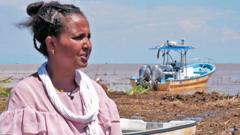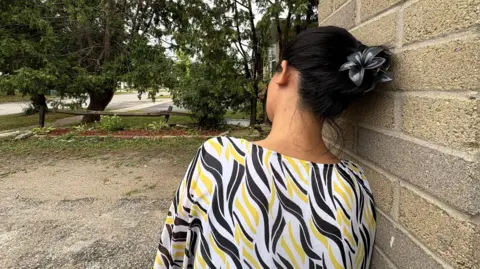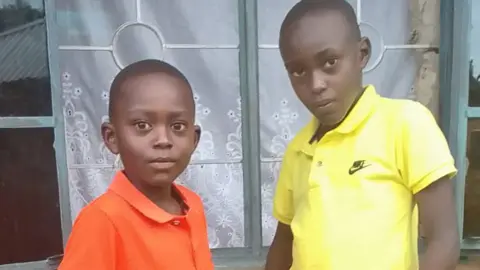As the sun dipped below the horizon over Lake Turkana, a profound sorrow marked the shore where Senait Mebrehtu, a mother from Eritrea, mourns her teenage daughter Hiyab. At just 14 years old, Hiyab lost her life in a tragic boat capsizing while attempting to cross this vast lake, part of a perilous journey orchestrated by people smugglers.
Having previously sought asylum in Kenya, Senait made the arduous pilgrimage to the site of her daughter’s drowning, accompanied by her two younger children. They had initially fled Eritrea to avoid religious persecution but were separated from Hiyab and her sister due to age-related conscription risks. As the girls begged to join their mother, family members recommended that they escape by engaging smugglers, unknowingly placing their fate in the hands of those who prioritize profit over safety.
The route the girls traveled has recently gained notoriety among smugglers, who refer to it as the "digital route." A female smuggler operating in Kenya acknowledged this tactic, citing the increased enforcement on traditional pathways that has pushed traffickers to leverage Lake Turkana as a dangerous alternative for migrants in transit.
Senait expressed immense regret, believing that had there been transparency regarding the perils, she would have never allowed her daughters to risk the crossing. The knowledge that her daughter boarded an overcrowded wooden boat, which ultimately capsized due to mechanical failure, has left her feeling devastated. Eyewitness accounts describe the harrowing moment when Hiyab’s boat overturned, resulting in a tragic loss of life beyond her own daughter.
Describing the negligence displayed by the smugglers, Senait remarked that they recklessly overloaded the vessel, carrying more than double its intended capacity. This stark negligence underscores the inherent risks associated with migrant smuggling, a scenario echoed by locals who have reported seeing bodies of migrants floating in the lake, further illustrating the deadly consequences of these desperate crossings.
On a broader scale, the UN reports that approximately 345,000 Eritrean refugees reside in East Africa as they escape a regime characterized by militarization and repression. The allure of safety in Kenya and Uganda—often sought after due to ongoing conflicts in neighboring Ethiopia and Sudan—continues to draw more migrants into the deceptive arms of smugglers.
As smugglers operate through a sophisticated network across various African nations, the experiences shared by survivors shed light on a grim reality where fear, desperation, and exploitation converge. While some migrants aim to settle permanently in these countries, others view them merely as transit points on their journey toward Europe or North America, often paying exorbitant fees that can reach several thousand dollars.
The smuggling process, fraught with peril, often leads to exploitation; migrants face additional dangers such as food scarcity, sexual abuse, and overcrowded living conditions in holding houses. Tragically, as Senait mourns the loss of her daughter, she remains acutely aware of the broader crisis impacting families in similar situations. Despite the grief that consumes her, she expressed a common hope among refugees for peace and healing in their homeland of Eritrea.




















